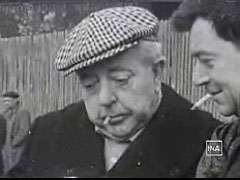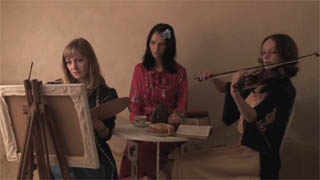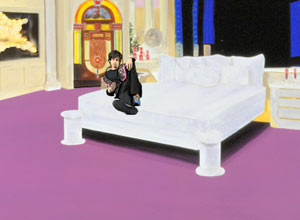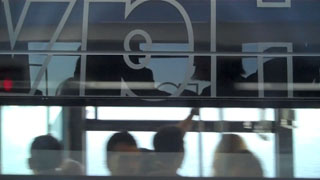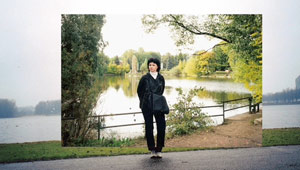
Irina Birger Thinks Drawing is Important (2010, 93 MB, 3:20 min. excerpt)
“What is the essence of a photograph, or more precisely, of an ID photo, portrait or self- portrait ?
You could almost ask, what is the essence of art. Or, what is the essence of life? That time always passes.
As the Greek philosopher Heraclitus put it in the 5th century BC, Panta Rhei, ‘Everything changes,
nothing remains still’. In the short video film ‘Irina Birger Thinks Drawing is Important’, Irina Birger
provides her answer to such questions.
A waterfall of self-portraits taken from photo albums belonging to her, her family and circle of
acquaintances, creates an ingenious, dizzying autobiography of the artist through the years.
We see the stereotypical development of the artist influenced by the history of art, from classic to
contemporary, and by the places where she has lived in her nomadic existence, from communist
Russia, the former Yugoslavia at the beginning of the civil war there, Israel during the Second Intifada and Germany after its reunification, to her present but certainly not final destination: the Kingdom of The Netherlands.
There’s a pinch to these moving images, where the essences of film and photography converge and clash. In a similar manner Birger’s life collides with the wrenching history of conflict zones and the sometimes difficult existence as an artist. ‘Drawing is Important,’ she posits at the end, her answer in this photo-turns-film project to the question of how she holds her own in life” (Text by Vera Stiphout)
by Irina Birger.

